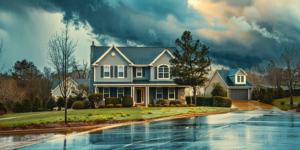The COVID-19 crisis has thrown a kink into almost every aspect of our lives – from planning weddings to getting groceries. Even building a house comes with its own set of challenges. Fortunately, this guide is here to help with six important facets of home construction that you should take into consideration during this strange and unpredictable season.
- Location
While the housing market has taken a blow from the stay-at-home order, not all home-construction companies are out of commission. In Arizona, for example, builders have reportedly experienced no significant interruptions to their business. Furthermore, the California Association of Realtors has even hinted at improvements in their market despite the effects of the pandemic. Location is always an important consideration when building or buying a home, but it is especially crucial in our new reality.
- Pent-Up Demand
This term is used in economics to refer to the sudden growth of a market after a period in which a large number of people forgo its products or services. This is especially pertinent to the COVID-19 pandemic, and many businesses are anticipating its consequences. Pent-up demand, combined with the current housing shortage and low rates of interest, will inevitably result in a building boom. This is important to consider as you weigh the costs and timing of building.
- Structural Design
The pandemic and its wide-ranging effects have encouraged new ideas about everything from technology to architecture. When it comes to designing your house plan, you may want to consider creating a living space that is comfortable and breathable – and ultimately supportive of the quarantine lifestyle should this necessity return. Architect Maura Trumble recommends a residential design featuring an open floorplan, which facilitates more space and flexibility in the home. Similarly, Vicki Yuan suggests using structures that allow for natural lighting and optimal air circulation.
- Timing
The timeframe of your building project is perhaps the most crucial consideration. Depending on where you are in the process, you may be affected by cost fluctuations and other economic consequences of the pandemic. If you are in the beginning stages, you have more options for how to move forward in the case of a price change or other inconvenience. Projects that are farther along may actually accelerate, but they often require additional expenses for protection in light of the pandemic.
- Backorder
Another unfortunate consequence of the coronavirus crisis is a backorder – an order that is blocked because the requested materials are out of stock. This is a serious dilemma for homebuilders, who depend on readily-available materials to continue moving forward in construction. Backorders will stagnate the progress of a home-building project, so you must keep this in mind as you make plans.
- Risks
Lastly, you will want to consider the risks involved with building a house during this unprecedented and stress-inducing season. It is not uncommon for homebuilders to work overtime in order to accelerate the pace of a project, and while this may move things along at a wonderful rate, it poses risks such as injury and fatigue. It is important to consider how workers may be affected since they are not only the backbone of your project but human beings who deserve respect – and a special dose of support since many of them are facing extra challenges and expectations.
Conclusion
Building a home is no easy task – and it is even harder as we learn how to cope with the challenges and inconveniences of our new reality. Those caught in the middle of their projects are affected perhaps the most since they have limited options for how to move forward. However, all aspects and stages of the process come with their own difficulties, and there is no right or wrong way to navigate around the kinks and setbacks. Rather, assess your own situation, using these considerations as a guide for paving a new path toward your home-building dreams.




